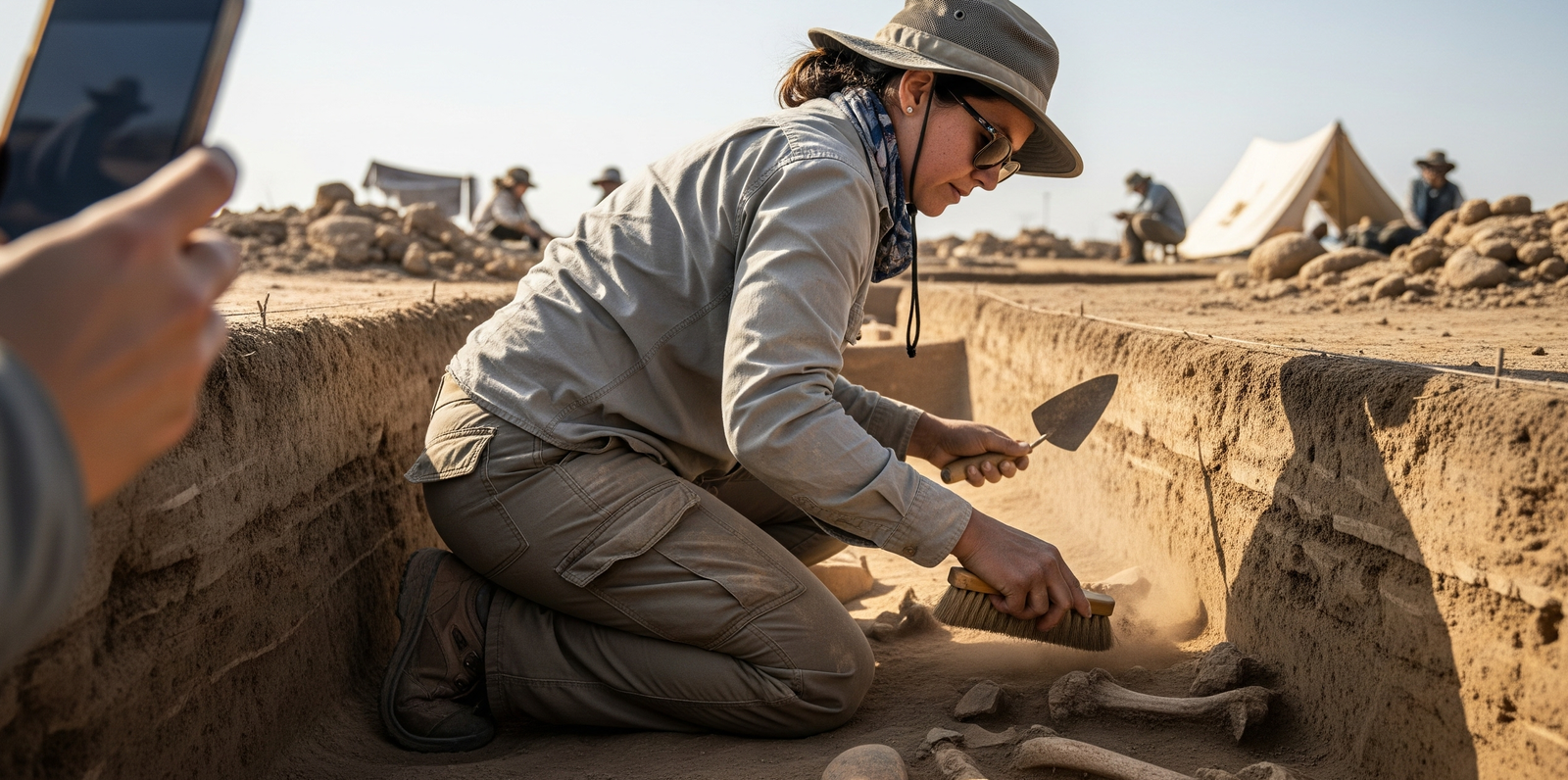Professional Profile
Dr. Kaelan Rhys Thorne
Position: Director, Ronwa Research Project (2012-present)
Education: PhD Archaeological Linguistics, University of Edinburgh (2006)
Specialization: Undeciphered ancient scripts and symbol systems
Languages: English, Welsh, Latin, Ancient Greek, Arabic, basic Coptic
Career Background
- Research Fellow, British Museum (2008-2012)
- Field Archaeologist, Mediterranean Survey Project (2006-2008)
- Freelance Paleontologist, Private Excavations (2000-2006)
- Community Paleontology Consultant, Wales & Southwest England (1998-2006)
Early Career
Dr. Thorne began her career as a paleontologist, conducting private excavations in residential areas across Wales and Southwest England. She specialized in Jurassic-era fossil recovery, often working with homeowners who discovered unusual formations during construction projects. This hands-on fieldwork experience with delicate excavation techniques and systematic documentation later proved invaluable in her archaeological linguistics work.
Career Transition & The Timbuktu Discovery (2012)
From Paleontology to Archaeology
Dr. Thorne's transition from paleontology to archaeological linguistics began during her doctoral studies at Edinburgh. Her meticulous fossil excavation methods, honed through years of backyard dinosaur bone recovery, proved remarkably applicable to delicate artifact preservation. "The patience required to extract a complete Ichthyosaur vertebra from someone's garden taught me everything about systematic documentation," she often notes.
Her paleontological background provided unique advantages in archaeological work—understanding geological stratification, dating methodologies, and most importantly, the discipline to work with fragmentary evidence to reconstruct complete systems.
The Timbuktu Discovery
Dr. Thorne's career-defining moment came in summer 2012 while consulting on a private manuscript collection in Timbuktu. Among fire-damaged folios, she identified tablet fragments with symbols that didn't match any known ancient script. Her paleontological training immediately recognized the systematic nature of the markings.
Field Note Extract - July 23, 2012
"The symbols are clearly systematic—not random marks or decorative elements. Preliminary count suggests 20+ distinct glyphs with consistent proportional relationships. The stone material appears to be local basalt, but the carving technique is remarkably precise. My paleontology experience tells me this level of preservation and systematic arrangement indicates a sophisticated culture. This requires immediate systematic analysis."
This discovery led Dr. Thorne to establish the Ronwa Research Project, applying her fossil excavation methodology to ancient script analysis. "Once you've spent years piecing together 180-million-year-old creatures from garden fragments, reconstructing a 12,000-year-old writing system feels surprisingly familiar," she reflects.
Research Methodology
Core Principles
- Systematic Documentation: Every artifact receives detailed photographic, dimensional, and contextual recording
- Statistical Analysis: Symbol frequency and distribution patterns analyzed using computational methods
- Comparative Approach: Cross-reference with known ancient writing systems and archaeological contexts
- Controlled Speculation: Hypotheses clearly marked as provisional and subject to revision
- Peer Review: All findings circulated to academic specialists for critique and validation
Translation Confidence System
[certain] (90-100%): High confidence based on multiple confirmatory patterns
[probable] (70-89%): Likely translation with good supporting evidence
[uncertain] (50-69%): Possible translation requiring additional confirmation
[?] (<50%): Highly speculative or unknown elements
Major Discoveries & Publications
Key Findings
- 2015: First successful translation of Ronwa calendar system
- 2019: Phaistos Disc correlation study revealing 23% symbol correspondence
- 2020: UV analysis of Voynich Manuscript marginalia
- 2022: Astronomical accuracy verification of Thalor star-disc fragments
- 2024: Advanced metallurgical analysis revealing unusual material properties
Academic Publications
- "Statistical Analysis of Undeciphered Symbol Systems: The Ronwa Case Study" (Journal of Archaeological Linguistics, 2015)
- "Bronze Age Astronomical Knowledge: Evidence from Mediterranean Fragments" (Archaeoastronomy Quarterly, 2019)
- "Digital Epigraphy Methods for Fragmentary Inscriptions" (Archaeological Computing Review, 2021)
Current Research Focus
Priority Investigations (2024-2025)
- Calendar System Validation: Confirming astronomical accuracy across multiple centuries
- Trade Network Mapping: Tracing Ronwa symbol distribution across Mediterranean and beyond
- Material Analysis: Investigating unusual metallurgical properties in recovered artifacts
- Modern Connections: Exploring potential links to contemporary anomalous findings
Laboratory Facilities
Lab Designation: RL-21 (Ronwa Laboratory, Edinburgh facility)
- High-resolution photography and 3D scanning equipment
- XRF spectroscopy for material composition analysis
- Thermoluminescence dating capabilities
- Digital database with comparative analysis tools
Research Team & Collaborations
Core Team Members
- Dr. Mira Ashal (Materials Science): Metallurgical and compositional analysis
- Prof. K. O'Neal (Historical Linguistics): Comparative script analysis
- Dr. Sarah Chen (Archaeoastronomy): Stellar correlation studies
International Collaborations
- British Museum - Comparative artifact analysis
- Beinecke Library - Manuscript research
- Various European Archives - Historical document survey
- Mediterranean Archaeological Survey - Field work coordination
Contact & Collaboration
Dr. Thorne welcomes collaboration from qualified researchers and institutions. The Ronwa Research Project maintains an open approach to peer review and academic exchange.
Research Philosophy
"The Ronwa Project operates at the intersection of rigorous archaeological science and carefully controlled speculation. My paleontological background taught me that you can reconstruct entire ecosystems from fragmentary evidence if you're systematic enough. While our methods are scientifically sound, our interpretations push beyond conventional boundaries. We present our work as ongoing research that illuminates both the complexity of ancient cultures and the challenges of archaeological interpretation. Whether it's a Jurassic marine reptile or a Bronze Age writing system, the principles remain the same: patience, precision, and respect for the evidence."
